A geogrid is geosynthetic material used to reinforce soils and similar materials. Soils pull apart under tension. Compared to soil, geogrids are strong in tension. This fact allows them to transfer forces to a larger area of soil than would otherwise be the case.
There are different types of Geo Grid for different types of soils and uses. In the Denver metro/Front Range area, in most cases, it is used to create a stable base, along with the material installed in the Grid for driveways, parking areas, horse stalls, pens and paddocks, large pole barn floors prior to pouring Concrete, etc.
The grids can be filled with crusher fines; granite or river rock, class 1 structural fill dirt, class 6 roadbase; recycled concrete or granite and crushed rock, usually either 3/4" minus or 1 1/2" mountain granite, depending on the end use of the area. Example: You usually wouldn't want to fill the grids with crushed rock if it's for a horse paddock and pens. If its for a driveway that may be covered with concrete or asphalt you probably wouldn't want to use crusher fines.
Option 1: When you purchase the geo grid and the materials to fill it, based on comments from customers, you'll pay substantially more for either the grid or the filler material. One person commented that he sure wished he'd checked around more because he figured he paid about $50.00 per ton for the roadbase installed in the grid. We have heard this about companies that supply both astro/synthetic turf and the roadbase or crusher fines installed under it.
Option 2: Based on our customers information, you'll pay more for either the grid or filler material if you buy both from the same company. One customer reported that as close as he could determine he paid about $50.00 per ton for the roadbase installed in the grid.
The tremendous amount of rain we've received this Summer has revealed soil and drainage problems in many horse pens and paddocks. Using Geo Grid/Cells to correct the problem is a little more expensive than just digging out the poor soil and replacing it with Granite or River Rock Crusher Fines, but the extra work and expense will pay off in the long run.
We do not sell GeoGrid or GeoCells, but we deliver the material to fill them in, almost daily.
Once the poor soil is dug out, make sure you have a slight slope away from the horse barn so that any future rains/snow will drain away from it. You must do this before installing the Geo Grid and filling it in with Crusher Fines.
This Geo Grid was installed by one person in an afternoon. It is very simple, once you have dug the poor soil out. You can find lots of information on how to do this on the internet.
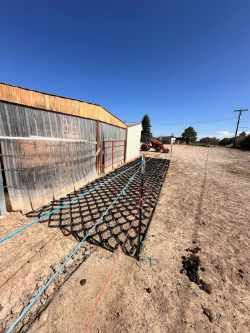
1. The mucky clay has been dug out to the correct depth and slope.
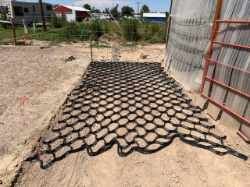
2. The Geo Grid/Cell installed and secured.
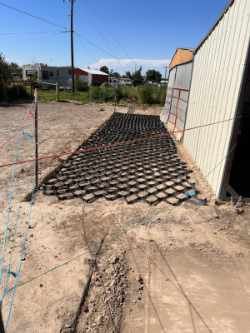
3. Geo Grid/Cell ready for crusher fines installation.
The Geo Grid/Geo Cells have been filled with the Granite Crusher Fines and the area leveled and slightly compacted. This will help keep the area well drained and drier than most horse paddocks for years to come.
Both Granite and River Rock Crusher Fines work well for Geo Grid/ Geo Cell installation.
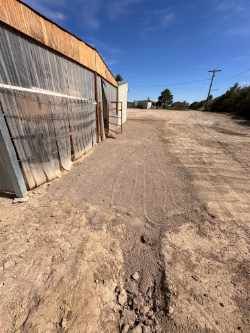
4. Completed project - Crusher Fines installed in the Geo Grid
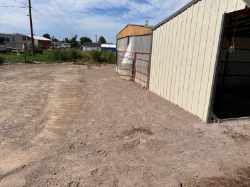
5. Install the material carefully so the grids aren’t mashed down.
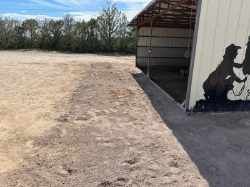
6. Once the grids are full of material, tamp the material to compact it into place.
